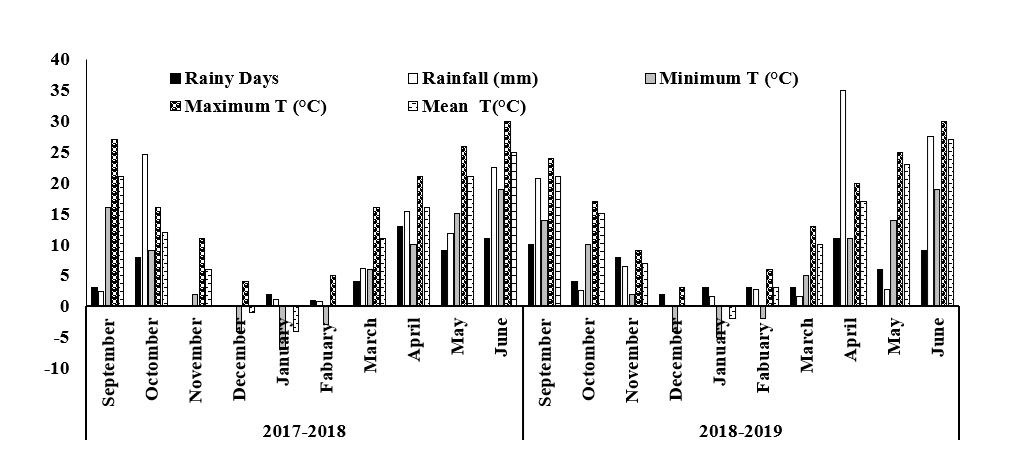Effects of Nitrogen Rate, Ratio, and Timing on Agronomic Parameters of Winter Wheat
Keywords:
Nitrogen, Ratios, Rates, Dry biomass, Fresh biomass, Growth stagesAbstract
Efficient nitrogen (N) fertilizer management is pivotal for enhancing agronomic indices while ensuring sustainable agricultural practices. This study explored the effects of different nitrogen levels (0, 75, 150, 225, and 300 kg N ha⁻¹), application ratios 5:5 (50% + 50%) and 6:4 (60 + 40%) and timing (jointing, flowering, and grain filling stages) on agronomic parameters of winter wheat. The results revealed that the 225 kg N ha¹ treatment at a 6:4 ratio performed significantly better than other treatments across growth parameters. At this optimal rate and ratio, plant height, aboveground dry biomass (AGDB), leaf dry weight, and stem dry weight were significantly higher compared to lower (75 kg N ha¹) or excessive (300 kg N ha¹) applications. Plant height exhibited an increasing setup up to 27.30% at jointing, 24.34% at flowering, and 33.13% at grain filling under 225 kg N ha⁻¹ at 6:4. Aboveground biomass followed a similar trend, achieving a 66.90% increase at jointing under 225 kg N ha⁻¹, while leaf and stem dry weights reflected the vigorous contribution of nitrogen rates and ratios, particularly at jointing and flowering stages. Leaf area dynamics and leaf area index (LAI) further validated these findings, peaking at the flowering stage for 225 kg N ha¹ at 6:4. The results emphasize the importance of optimizing N fertilizer rates, ratios, and application timing to improve crop growth dynamics and productivity. The results provide appropriate evidence for sustainable nitrogen management, application of nitrogen at 225 kg N ha¹ and a 6:4 ratio as an effective approach to maximize agronomic performance in winter wheat while mitigating environmental impacts. These results contribute novel perspectives to nitrogen use efficiency and influence practical recommendations for precision agriculture.


















